French Navy 1850-60
 Marine Francaise
Marine Francaise
The Marine Impériale before the Crimean War
The French Navy under Emperor Napoleon III had the rank of the world’s second largest, as France was a long standing rival to Britain, but now with appeased relations, was in full colonial expansion wth the goal to create the second largest Empire. There was no question of surpassing the British Royal Navy, not only because of industrial capabilities, as France lagged behind, but also because of the necessity to maintain a large -and-costly- land army. Its now well-established foes on the continent being Austria and Prussia.
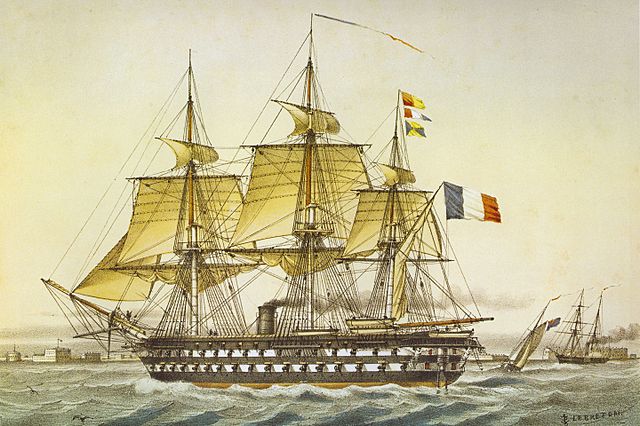
Steamship of the line Austerlitz (engraving by Lebreton).
The French Navy neverthess had a brillant university network and was well able to excel in science and technology to compensate for its numerical inferiority to Britain by innovation and quality. Napoleon III arrive din power in 1852, elected and replacing the contested Louis-Philippe I, on a social background. The Emperor knew that a strong navy was the only way to built to repair france’s prestige internationally and be the instrument form building and maintaining a global colonial empire. A powerful Navy was also necessary to counted British traditional blockade and trade war. France’s industrial might was largely due to the effort of a new bourgeoisie encourage by King Louis-Philippe, and despite social reforms, the effort was maintained.
Military research during Napoleon III ws relaunched, both in the army and navy and there were largely enough talented engineers from the elite technical schools founded by Napoleon Bonaparte fifty years before. France was ready to launch a serie of breakthrough, notably in naval warfare.
Dupuy de Lôme and Paixhans for example were both engineers and techy officers, giving France respectively the first steamship of the line (Napoleon) and a high explosive shell, called the “Paixhans bomb”, devastated for wooden ships. In 1840 still, dispatch vessels and gunboats were the only ones propelled by steam power. Larger naval assets, ships-of the line, were sail-only. Many in the admiralties believed it was impossible to marry a steam engine with a large military vessel. The sidewheel system was the only way to propel a ship and was way too vulnerable to enemy fire. Therefore the adoption of the screw propeller, already desmonstrated in Britain with the dispatch vessels HMS Archimedes in 1837, started to show a way forward. Even before, all-metal screw-propelled steamships (like Brunel’s SS Great Britain) showed a way to be more innovative with steal and metal in 1843. But the Royal Navy did not followed. This was not lost on the other side of the channel however.
The French Navy goes full steam

The Napoleon was the first steam two-decker (plus one incomplete) ever to use steam propulsion and a lifting screw, as well as beeing fully rigged. It was based on the usual first class warship of the time, the 90-guns.
The SS Great Britain in fact impressed Dupuy de Lôme so much, he decided in 1845 to present King Louis Philippe a new major warship with a screw, called by then the “Prince de Joinville”. It was ordered in 1847 and started in Toulon, and then was renamed “24 Février” during the French Second Republic and the King’s abdication, and then “Napoléon” in May 1850, a few days before launch. She was eventually commissioned in May 1852, and a few months later (In december) Louis Napoléon was elected.
Despite some strong septicism from the admiralty, the enthusiastic future Napoleon III visited the yard and the ship later during her sea trials. It impressed all present so much that it became obvious this was a way forward. Plans to convert more ships commenced, but the war in Crimea started in between.
The French Navy in Crimea (1853-56)
French naval forces, order of battle.
– Screw three deckers : Montebello (114 guns, converted in 1852) in service as 1854.
– Screw two deckers : Napoleon (1850), Charlemagne (1851), Jean Bart (1852), Austerlitz (1852), two Fleurus class (1853), two Duquesne class (1853), three Navarin class (1854).
– Screw frigates : Isly (1849, 2690 guns, 40 guns), Bellone (1853, 2350 tons, 36 guns) and Pomone (1845, 1900 tons, 36 guns).
– Screw Corvettes : The two D’Assas class (1854, 2100 tons, 16 guns), the three Primauguet class (1852, 1900 tons, 10 guns), Roland (1850, 1970 tons, 8 guns), and three iron hull ships : Reine Hortense (1846), Caton (1847), and Chaptal (1845).
– Screw Devastation class armoured floating batteries : Five purpose-built ships launched in 1855 and ready in time for the end of the war.
– Paddle frigates : 19 ships, all from 1841 to 1848. Ranging from 20 to 8 guns, and 2460 to 2820 tons.
– Paddle corvettes : 14 ships, from 1838 to 1851, ranging from 900 to 1600 tons, and from 4 to 10 guns, two were Iron hulled.
– Screw sloops : 5 ships : Biche, Corse, Lucifer, Marceau class, and Sentinelle. From 400 to 900 tons, 120-150 nhp, 2-6 guns. 13 other built after the war.
– Paddle sloops : 37 ships from 1830 to 1855, 400 to 900 tons, and 2-6 guns.
– Screw gunboats : 26 mixed sail-steam 2 to 4 guns ships, and 31 iron hulled one-gun, steam only batteries.
– Sailing ships of the Line : Valmy (114 guns), Hercules and Jemmapes (90 guns), Iéna, Inflexible and Sufren (82 guns), Jupiter (80) and Duperré (70).
– Sailing Frigates : 27 ships ranging from 38 to 56 guns.
– Sailing corvettes : 11 ships of 22 guns and one of 38 guns.
– Brigs : 21 ships equipped with 8 to 14 carronades and one with two heavy paixhans Mortars.
Steamships conversions
Algésiras, Arcole, Imperial and Redoutable launched in 1855-56, all beeing 5040 tons in displacement. In 1853, two 80-guns of 4330 tons were launched (Duquesne and Tourville), and the three Wagram class in 1854 (4560 tons), 90 guns. The Charlemagne (80 guns, 4060 tons) was launched in 1851, Jean Bart (76 guns, 4010 tons) and Austerlitz (86 guns, 4430 tons) in 1852. Many other steam ships-of-the-line were built during the crimean war (see 1870 records), as well as nine other sailing two-deckers of 90-guns converted as steamships from 1857 to 1860.
Some three-deckers were also converted, in fact, all four of the Friedland class (5170 tons, 114 guns) in 1854-58, and the Montebello (4920 tons, 114 guns), converted in 1852 was the only one which served during the Crimean war. The very first purpose-built steam three-deckers was the impressive Bretagne, a 6770 tons, 130 guns.
Unfortunately she was launched only in 1855 and therefore was not in service before the war ended. Depite of this, she demonstrated that even such gigantic ships could be propelled by steam power. Of course, cumbersome boilers and an enormous amount of coal in such ships led to gave them a deeper hull below waterline, thus reducing their habilities to be anchored in many shallow water ports.
The Crimean war allowed this new breed of warship to be put on the test. The Napoleon, as well as its sister-ships performed well against the Russian forts. In fact, one episode was so famous that it changed completely the way the British admiralty seen these French experiments…
Heavily pounded and its rudder disabled, one of the french sailing three deckers was pushed by the current near the forts and the reefs, when she was took in charge and towed by Napoleon out of any danger(the weather was sunny and very calm, perfect for gunnery practice, but all windless sailing ships were unable to evolve). This episode proved that the steam power, not only still allowed the ship to bombard succesfully the forts, but also to save an almost doomed traditional three-deckers.
The Paixhans guns were also put to the test. During the Sinope naval engagement, the Russian fleet famously burned most of the Ottoman fleet, which was almost unable to respond. Later in Crimea, some relatively light, french floating batteries were able to bombard the forts, blewing up their magasines and burning the unprotected crews from above (they fired on parabolic angles). The batteries, of the Devastation class, were specially built for this task, and were also heavily protected, in fact, they were armoured floating batteries, and remained all safe from the Russian replies.
The French fleet in 1854:
 Charlemagne (1851)
Charlemagne (1851)
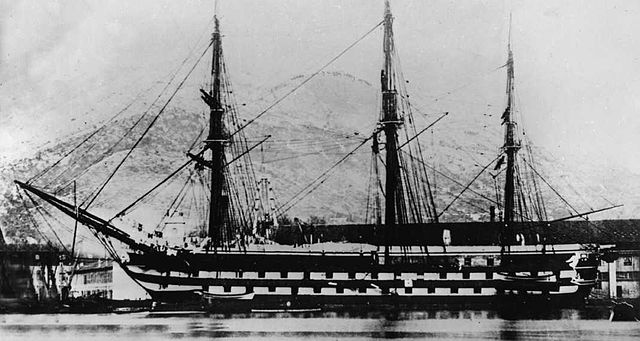
The Charlemagne was a 66-gun Second Empire Navy ship of the line. It is a sailing vessel transformed into a steamship by the addition of a steam engine driving a propeller. In November 1852, he was sent by Napoleon III to Constantinople, in violation of the London Convention, to force the Sultan to grant Catholics the keys to the Basilica of the Nativity. He took part in the Crimean War.
Armament: 80 guns, displacement: Dimensions: Similar to Napoléon.
 Montebello (1852)
Montebello (1852)
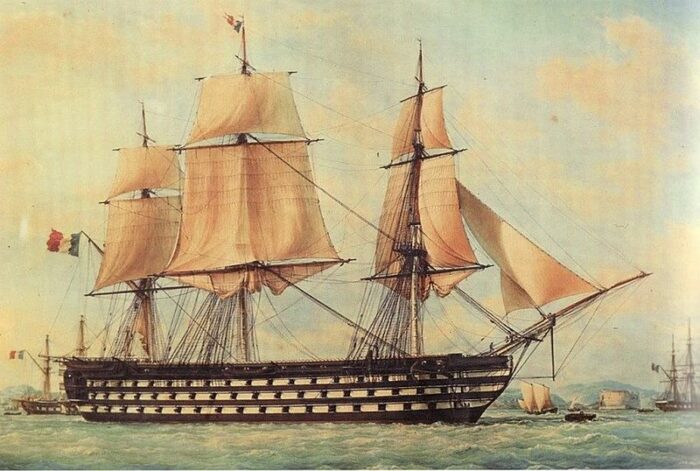
Montebello was an Océan class 118-gun ship of the line, launched in 1812 refitted in 1821. On 31 October 1836, she was driven ashore at the Grosse Tour, Toulon but refloated. In 1851, she was refitted for a 140 shp (100 kW) steam engine. She took part in the Crimean War as flagship of admiral Armand Joseph Bruat from June 1854. 120 died later in an epidemic of cholera, including Bruat. On 5 March 1855 she took part in the Siege of Sevastopol, and the expedition to Kerch and in the Battle of Kinburn. In 1860, she replaced Suffren at Toulon as a gunnery schoolship. From 1867, she was a floating barracks, BU 1889.
The previous Montebello was a Téméraire-class 74-gun ship of the line of the Pluton sub-class. She was captured by the First French Empire in Venice to replenish the ranks of the French Navy. Started as Duquesne, renamed Montebello she was completed in Venice under supervision of engineers Jean Tupinier and Jean Dumonteil following plans by Sané. She was probably launched in November 1813, used as a floating battery in the defence of Venice, surrendered incomplete to Austria at the fall of Venice. Completed for the Austrian Navy as Cesare. 1816, found to have rotten timber. Extant 1824.
 Austerlitz (1852)
Austerlitz (1852)

Laid down as Ajax, par of the Hercule class (see below). She was renamed Austerlitz on 28 November 1839, still on keel.
In 1850, her rigging was changed for that of a 90-gun, and a steam engine was installed.
On 19 September 1854, she ran aground in the Ledsund, in Åland, Grand Duchy of Finland. She was refloated after throwing sixteen of her cannon overboard. She took part in operations in the Black Sea in 1854. On 16 April 1855, Austerlitz ran aground at South Foreland, Kent, United Kingdom in foggy weather. She was refloated the next day.
From 1871, she was used as a prison hulk of prisoners of the Paris Commune. Between 1874 and 1894, she was used as a school ship. She was eventually broken up in 1895.
Specs: 4500 tonnes, dimensions 70.62 x 16.80 x 7.67 m (231.7 x 55.1 x 25.2 ft). Steam engine 500 shp= 10.2 knots. Crew 883, Armament 100 guns
 Jean bart (1852)
Jean bart (1852)

The Jean Bart was a 90-gun Suffren class ship of the line of the French Navy which also took part in the Siege of Sevastopol (1854–1855) and Battle of Kinburn (1855) as a sailing ship, laid down on 26 January 1849 in lorient and Launched on 14 September 1852. In 1856, Jean Bart was fitted with a steam engine. From 1864, she was used as a training ship, renamed “Donawerth” in September 1868, and scrapped, renamed again “Cyclope” in 1886.
Specs: Displacement: 4,070 tonnes – Dimensions: 60.50 x 16.28 x 7.40 m (198.5 x 53.4 x 24.3 ft). Protected by 6.97 cm of timber. Sail 3114 m², Crew 810-846 men. Armament initially until 1839: 30 × 30-pdr (lower deck), 32 × 30-pdr middle deck, 24 × 30-pdr carronades, 4 × 18-pdr upper deck. After 26-32-24* pdr from lower to upper decks + 4x 18 pdr lower. *carronades
 Hercules class screw 2-deckers (1853)
Hercules class screw 2-deckers (1853)

A serie of 13 ships (2 cancelled) on identical plans. The first built in Toulon.
These were late type of 100-gun ships of the line, second strongest of four ranks of ships of the line designed by the Commission de Paris. The first units were classical straight-walled ships of the line, but the next ones were gradually converted to steam, the very last one was built with an engine from the start. They evolved as an enlargement of the straight-walled, 90-gun Suffren class, as suggested by Jean Tupinier.
From the Henri IV, onwards, a rounded stern was introduced. The next ones were built with the rounded stern, retrofitted on the early units in their forst overhaul.
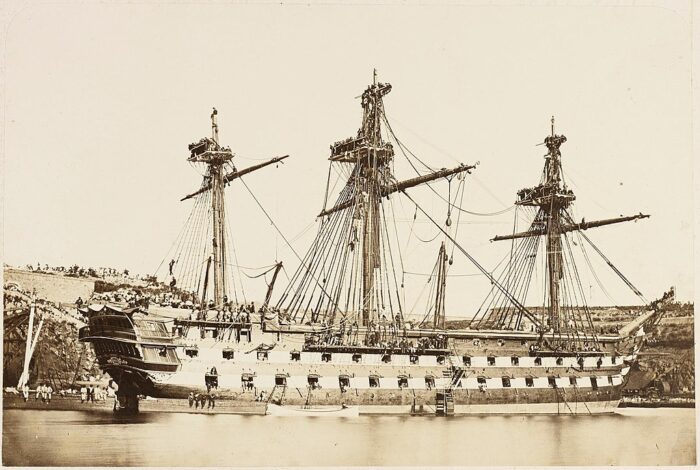
Photo by Disderi of L’Hercules in Brest, 1936
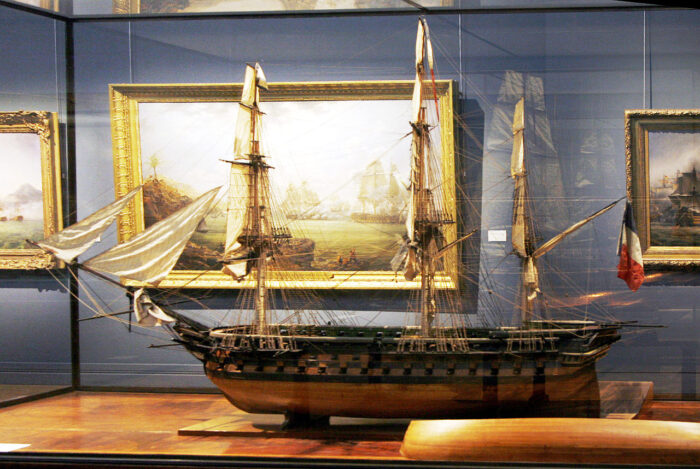
Model at the Musee de la Marine Paris
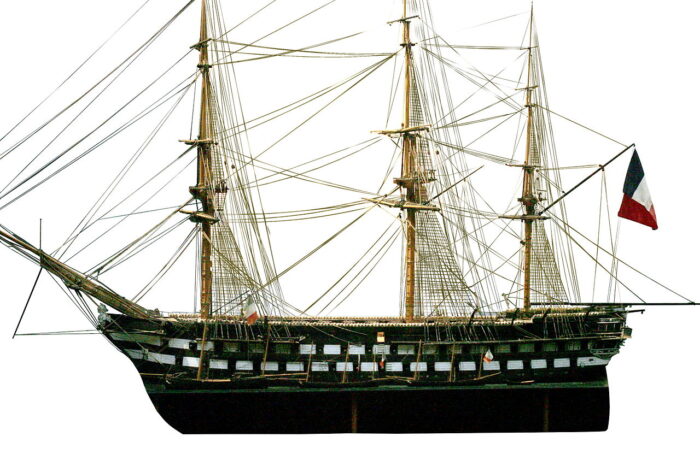
Tage, Model at the Musee de la Marine Paris
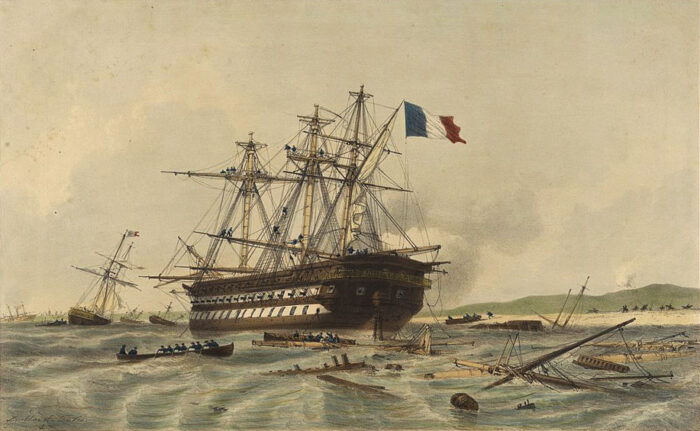
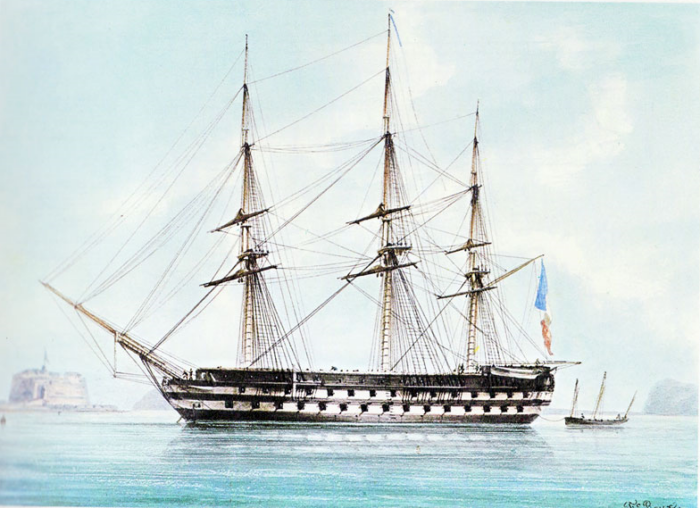
Watercolor of Duguay-Trouin 1860s
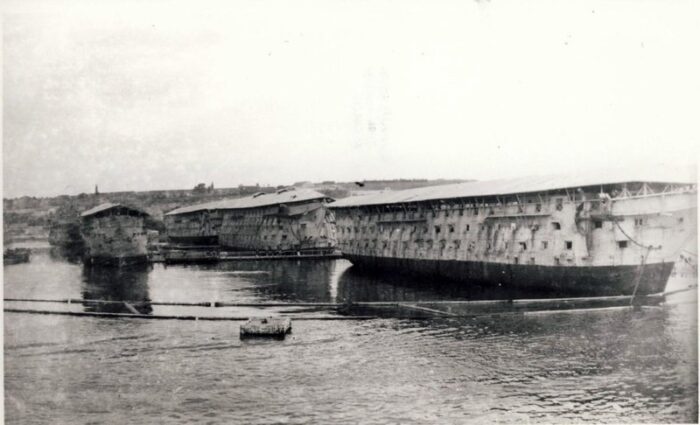
Eylau as a hulk in Toulon, with Mars and Souverain nearby, 1900.
Specs:
4,440 tonnes, Dimensions 62.50 x 16.20 x 8.23 m (205 x 53 ft 2 in x 27 ft), 3,150 m2 (33,900 sq ft), crew 920-955
Armament: 100 guns: 32*/30**/30*** 30-pdrs, lower/middle/upper: *long *short *carronades and 4 long 18-pdr upper deck
List:
Hercule (1836):
In 1837 sge too part on the expedition to take the city of Constantine, and made a long cruise to West Africa, South America and the Carribean, the USA and back to Brest. From 1839, she was in the Mediterranean squadron under Captain Fauré. In 1842, she was transferred to the Middle East and from October 1850, she was Brest for a refit receiving Paixhans guns. Shi did not took part in the Crimean war. In 1860, she was struck, support ship, then prison hulk from 1875 in Brest, BU 1882.
Jemmapes (1840):
In service from 1840, she took part in the Bombardment of Mogador in 1844. Deactivated in 1851, she she took part in the Crimean War, Baltic 1854, Black Sea 1855. She was decommissioned in 1864, transport, hulk, then scrapped 1890.
Tage (Lorient, 1947):
Laid down in 1824 (Polyphème, Saint Louis) launched 1947. She took part in the Crimean war. On 12 February 1855, she ran aground in Kamiesch, Crimea, was refloated. From 1857 to 1858, she was converted to a steam ship. After 1871, she became a prison ship to hold insurgents of the Commune of Paris. Later she ferried prisoners to New Caledonia. She was hulked and scrapped in 1896.
Henri IV (Cherbourg, 1848):
Last warship launched under Louis Philippe I, saw the French Second Republic, Second French Empire. She was commanded by Louis Henri de Gueydon from 1850 to 1852, taking part in the bombardment of Salé (Morocco) on 26 November 1851.
She took part in the Bombardment of Odessa (1854), lost to a storm at Eupatoria 14.11.1854.
Austerlitz (Cherbourg 1852):
Laid down as Ajax, renamed Austerlitz on 28 November 1839 on keel, rigging changed to a 90-guns, steam engine installed (500 shp, Speed 10.2 knots). 19 September 1854, ran aground in Ledsund, Åland (Finland) during the Baltic campaign. Refloated, operations in the Black Sea in 1854. 16 April 1855 she ran aground at South Foreland, Kent, in the fog, refloated the next day. From 1871: prison hulk (Paris Commune). 1874 to 1894: school ship. BU 1895.
Fleurus (Toulon 1853):
Ordered 1825 as Brianée, Dauphin Royal, renamed August 1830. Steam engine. Sea trials from January 1855. Black Sea, Crimean War. 1862: troopship for the French intervention in Mexico. Hulk in Saigon, HQ, French naval division of Indochina.
Prince Jérôme (1853):
Laid down 1827 as Hannibal. Renamed Jérôme Bonaparte. Did not took part in the Crimean war. Renamed Lazare Hoche 1870. Transport Loire 1872. Hulk 1885 in Saigon.
Duguay Trouin (Lorient 1854):
Started in 1827 as a 100-gun sailing ship, transformed on keel from 1856. Missed the Crimean war. 1860: New Caledonia, first steam ship to cross Cape Horn.
1863: Decommissioned. Hospital from 1867. Prison hulk 1870. Renamed Vétéran, BU 1877.
Turenne (Rochefort 1854):
Laid down 1827, launched 1854, completed 1855, troopship in the Crimean War. Transformed into Steam ship 1858-59. Took part in the French intervention in Mexico. Decommissioned in 1867, coaling hulk in Brest from 1869. BU 1887.
Ulm (Rochefort, Lys from 1830):
Launched 13 May 1854 with an Indret engine. Present at the Bombardment of Kinburn (1855). From July 1857, squadron of Toulon. Brest from 1860, new engine. Cherbourg June 1862. French intervention in Mexico. Brest 1863, stricken 1867, coaling hulk, BU 1890.
Wagram (ex-Bucentaure 1839):
Built Lorient 1833-1840. Started as Bucentaure, Crimean War, Battle of Kinburn. 1862, French intervention in Mexico. Sunk 29 April 1867 as target for torpedo trials.
Navarin (Toulon 1854):
Started in 1832, launched July 1854 as steamship. Troopship in the Crimean War. Schoolship 1862. 1873: engine removed, sailing transport for New Caledonia.
Hulk in Brest 1887, BU 1908.
Eylau (Toulon, 1856):
Laid down in August 1833, unfinshed, completed as steam ship in March 1857. Missed the Crimean war. Converted into troopship, 1862–1863, took prrt in the Maxican campaign. Barracks ship from 22 February 1877. Stricken 22 February 1877, Hulk, BU 1905.
 Tourville class screw 2-deckers (1853)
Tourville class screw 2-deckers (1853)
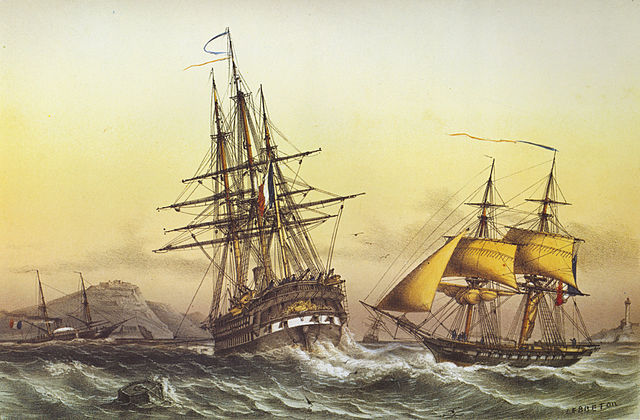
The Tourville class was built like the razeed Océan-class three-deckers. They had a reduction of armament (80 guns) but better stability but poor manoeuvrability. Two ships, Tourville and Duquesne. Tourville was launched 31 October 1853 at Brest and Duquesne launched 2 December 1853 at Brest. She took part in the Baltic Crimean War theater, shelling Sweaborg on 10 August 1855. She took part in the French Intervention in Mexico as troop ship, was in reserve by 1864. Hulked in Cherbourg, 1871 a prison for Paris Commune survivors. Stricken, renamed Nestor BU 1878.
Duquesne also took part in the Baltic front in the Crimean War with Tourville, and in Mexico as a troop ship. She was a barracks hulk until 1887.
Specs: 4,400 tonnes, dimensions 61.40 x 16.69 x 7.23 m (201.4 x 54.8 x 23.7 ft), Steam engine 650 HP. 90 Guns, three decks, 30 pdr long, short and carronades.
 Souverain class screw 3-deckers (1854)
Souverain class screw 3-deckers (1854)
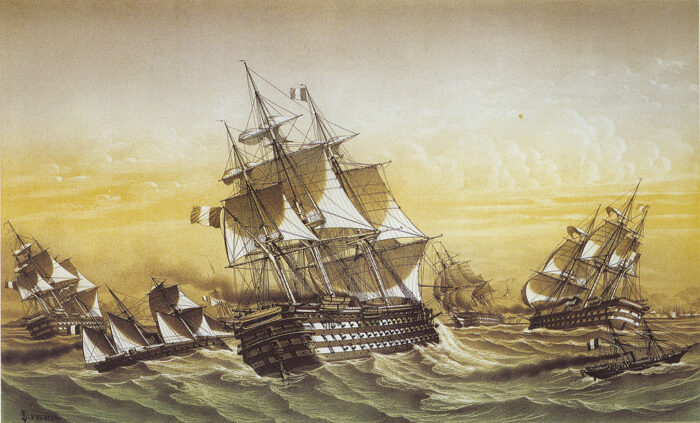
The Souverain class branched out in reality from the Ocean class ships of the line, made of 118 guns ships started at the restoration (after the exile of Napoleon). The class made the bulk of the French Royal Navy for decades, as most soldiered up to the Crimean war, and were converted to steam. A fully dedicated article is planned for this class. The ones we are interested in are the following:
Ville-de-Paris: Ordered 19 July 1806, laid down May 1808 at Rochefort as “Marengo” then “Ville-de-Vienne” in 1807, “Comte-d’Artois” on 8 July 1814, “Ville-de-Paris” on 9 August 1830, launched in 1850, entered Service in July 1851. Converted postwar, so in 1858. The back to sail in 1872 as transport, stricken in 1882, floating barracks until 1898.
Louis XIV: ordered in early 1811, laid down as “Tonnant” in April 1811 at Rochefort, renamed to “Louis XIV” in 1828, launched 1854 and in service the same year, so prewar. Converted to steam ship postwar in 1857. Stricken 1880, scrapped 1882.
Friedland: Ordered 20 February 1812, laid down at Cherbourg as “Inflexible” in May 1812, renamed “Duc de Bordeaux” on 19 December 1820, “Friedland” on 9 August 1830, launched 4 April 1840, service on 5 October 1840. Conversion to steam in 1857 but was abandoned. Laid up 1858, stricken 1864. Hulke “Colosse” in 1865, scrapped 1879.
Souverain: ordered 20 March 1813, laid down at Toulon April 1813, launched 25 August 1819, to steam 1857. Gunnery TS from 1860, stricken 1867, Hulk, scrapped 1905.
Sailing Ships of the Line
 Valmy (1847)
Valmy (1847)

Valmy (Battle of Valmy) was the largest three-decker of the French Navy, largest tall ship ever built in France. She was designed as a modernized 3-decker to succeed to the 1805 Ocean/Suffen class, which made the bulk of the 1st rates in France under Napoleonic times. She lacked their tumblehome and was rather more similar to the Hercule class. However due to their very large size ands cost, only one was built. She was laid down at Brest on Leroux plans in 1838, launched in 1847 and completed in 1849. She had more battey spaced but rolled badly, and was considered a failure. She took part in the Crimean war but had to be towed in position by steamships. Decom. right after the war in 1856, she became the TS Borda in 1862, Intrepride in 1890 and was still extant in Brest in 1890, BU.
Specs:
5,826 tonnes, 64.05 x 18.11 x 8.61 m (210.1 x 59.4 x 28.2 ft)
120 guns: 34 long cal.80, 36 short cal. 30, Crew 1100. Timber protection. Coppered hull.
 Ocean class (1805)
Ocean class (1805)
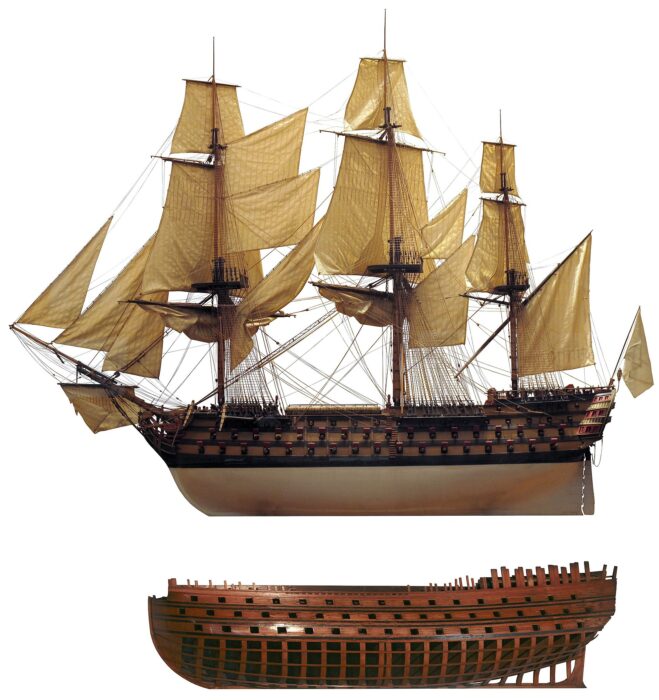
The Ocean class were still the main class of ships of the line built before Napoleon. Plans were prepared for a serie of 118-guns 3-deckers, 1st rate to succeed to now elderly ships ordered under Louis XV, by Louis XIV. They preceded the 1805 Commerce de Paris class. 20 were planed, 15 completed, with sub-deris such as the 1788 Commerce de Marseille and États de Bourgogne.
The class comprised also Dauphin Royal (launched 1793), Majestueux (1802), and vengeur (1803) of the 1st group, and the Napoleonic Austerlitz class: Austerlitz (1808), Ville de Paris (1850, converted to steam 1858), Wagram (1810), Imperial (1811), Montebello (1812), Louis XIV (1854, converted to steam), Sans Pareil (1812), Heros (1813, not commissioned), Friedland (1850), Souverain (1819, steam, service 1857), Trocadero (1824), destroyed by fire 1836. Most of thse ships were available for the war in Crimea.
Careers will be seen in the future.
Specs:
5,098 tonnes, ton burthen 2,746 tonnes
Dimensions 65.18 x 16.24 x 8.12 m (213 ft 10 x 53 ft 3 in x 26 ft 8 in)
Sail: 3,265 m2 (35,140 sq ft), 10 knots (19 km/h; 12 mph)
Crew 1,079–1,130
Armament 124–136 guns: Lower 32x 36-pdr, middle 34x 24-pdr, upper 34x 12-pdr
Forecastle 4-6 36-pdr carronades, Quarterdeck: 14-18-20 8-pdr*
*Austerlitz and Montebello in 1834 had 14x 36-pound carronades.
 Iéna class (Commerce de Paris class) (1814)
Iéna class (Commerce de Paris class) (1814)
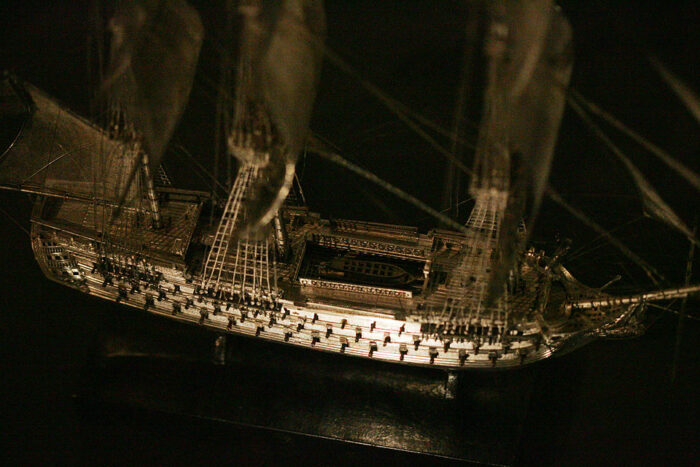
The Commerce de Paris class were a modrn type of 110 guns in the wake of the Ocean class 1st rate, but shortened for extra agility. They were also designed with “flat” walls by Jean Noel Sané.
9 ships were planned from 1804, only 2 were completed in 1807 and 1815: Commerce de Paris and Duc D’Angoulème, both built at Rochefort. The second was renamed Iéna and had nan important role in the riental Crisis of 1830, Crimean war in 1854-55. She was originally stationed off Balchik, Bulgaria. On 14 November, she was driven ashore in the Dardanelles, refloated and converted in 1855 to a troopship with capacity for 1000 soldiers. Stricken on 31 December 1864, she was the central hulk for the Toulon reserve fleet until 1915. Scrapped in 1885.
On her side, Commerce de Paris was razeed in 1825, renamed Commerce on 11 August 1830, Borda on 18 December 1839, Vulcain on 18 August 1863. She did not took part in the Crimean war, was hulked and BU in 1885. The others, Monarque, Hymen, Neptune, Terrible were Never finished.
 Jupiter (1831)
Jupiter (1831)
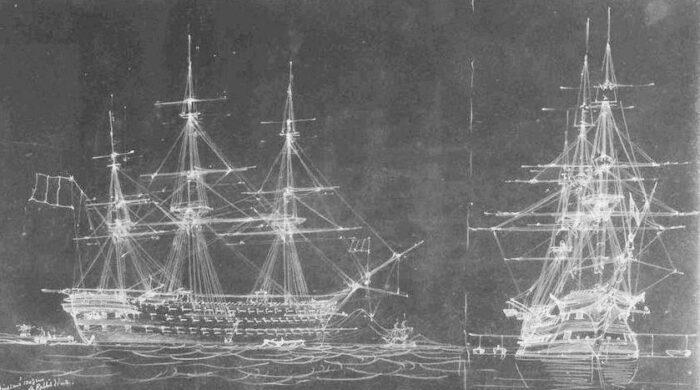
Jupiter was a 80-gun Bucentaure-class ship of the line designed by Sané, ordered in 1811, launched 1831, completed 1835, still active during the Crimean War. In 1836, she ferried Admiral de Markau from Brest to Fort de France to replace Admiral Halgan as governor in the Caribbean. In 1837, she ferried troops to Algeria and took part in the naval parade of 6 September 1850 in Cherbourg. After the Crimean War she was stricken in 1863, became a barracks hulk in Rochefort, BU 1870.
Specs:
Displacement: 2,000 tonnes
Dimensions: 55.88 x 15.27 x 7.63 (183.33 ft x 50.10 ft x 25.03 ft)
Sail plan: 2,683 m2 (28,879.57 sq ft)
Crew: 866
Armament: 30× 36-pdr, 32 × 24-pdr, 18 × 12-pdr, 6 × 36-pdr carronades
 Duperré (1840)
Duperré (1840)
Duperré was born as Couronne, a Temeraire class 74-gun, laid down 1813, launched 1824, renamd Barrcade in 1848 and Duperré in 1949. She took part in the Invasion of Algiers in 1830. She took part in the Crimean War, Baltic campaign. On 22 July 1854, she ran aground off Åland, Grand Duchy of Finland, refloated with assistance of HMS Driver and HMS Hecla. Hulk from 17 August 1869. BU in 1870.
Specs:
2,966 tonnes burthen, 5,260 tonnes FL
55.87 x 14.90 x 7.26 m (183.3 ft x 48 ft 11 in x 23.8 ft)
Sailing rig: 2,485 m2 (26,750 sq ft) speed c10 kts
Armament: Lower: 28 × 36-pdr long, Upper 30 × 18-pdr long
Forecastle: 16 × 8-pdr long
Quarter deck: 4 × 36-pdr carronades
Screw Frigates
 Pomone (1845)
Pomone (1845)
 Isly (1849)
Isly (1849)
 Bellone class Frigates (1853)
Bellone class Frigates (1853)
 Impératrice Eugénie class Frigates (1856)
Impératrice Eugénie class Frigates (1856)
Screw Frigates
Next: screw Corvettes/sloops, batteries, paddle frigates/corvettes to follow.
The French Navy 1856-1870
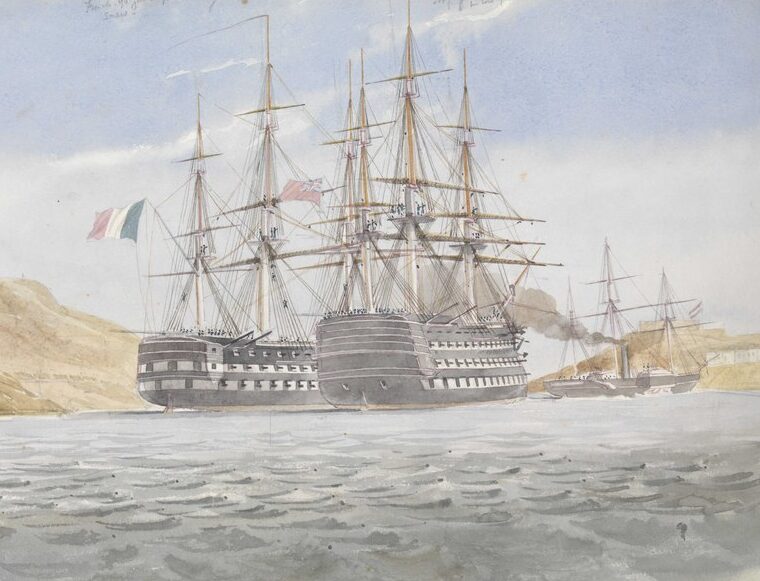
The French Navy between 1856 and 1870 was a period of significant transformation, marked by the transition from sail to steam power, advancements in ironclad warships, and increasing competition with the British Royal Navy.
Completed Shift from Sail to Steam:
By the 1850s, steam propulsion was increasingly adopted, with the navy phasing out traditional sailing warships.
The Napoléon (launched in 1850) was the first steam-powered battleship and set a precedent for other navies.
Ironclad Revolution:
The launch of La Gloire in 1859, the world’s first oceangoing ironclad warship, revolutionized naval warfare.
This led to an arms race with Britain, which responded with the HMS Warrior in 1860.
Expansion of the Fleet:
Emperor Napoleon III sought to modernize the navy to match Britain’s strength.
The fleet expanded with more ironclads and steam-powered ships, such as the Magenta and Solferino (the only ironclads with two gun decks).
Franco-Prussian War (1870-1871)
Despite its modernization, the French Navy played a limited role in the Franco-Prussian War.
France had naval superiority but was unable to use it effectively against Prussia, which had a weak navy but strong land forces.
Colonial Expansion & Global Presence:
The navy supported French colonial ventures in Indochina, Africa, and the Pacific.
It maintained overseas stations and protected French interests worldwide.
Challenges & Limitations:
Budget constraints and political shifts slowed modernization.
France struggled to keep pace with Britain’s superior shipbuilding capacity.
The Franco-Prussian War highlighted the navy’s strategic limitations in a primarily land-based conflict.
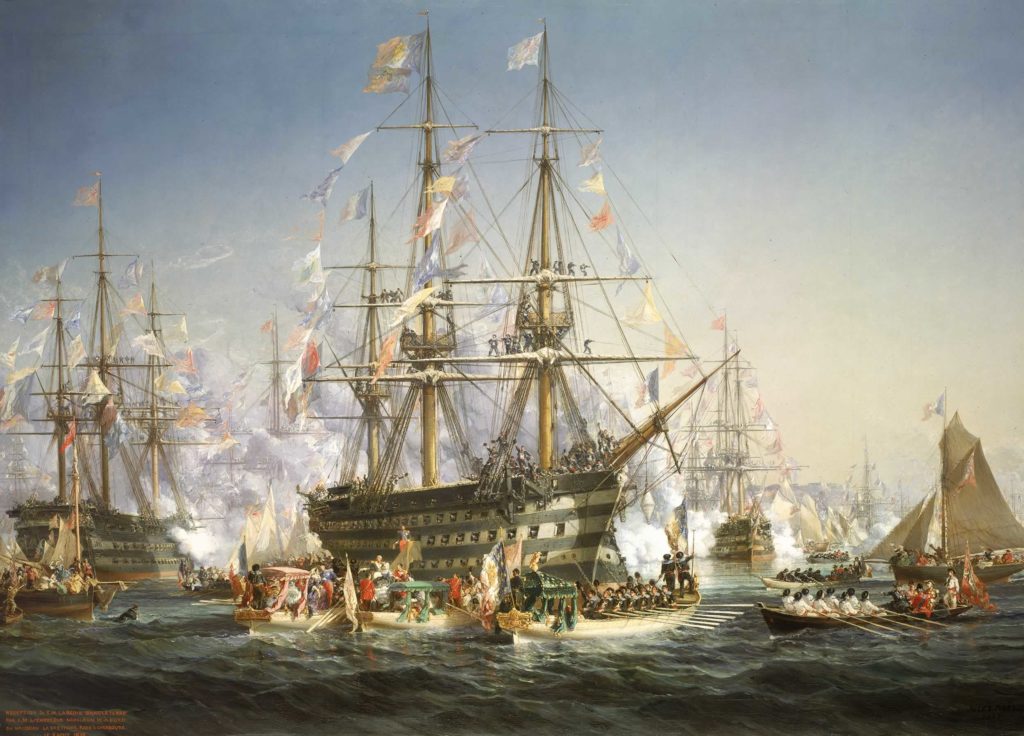
The Bretagne, 130-guns three-decker steamship of the line (1855), showcased in the 1859 naval review, since 1866 a training ship. Painting by Jules Achille Noël (London).
French Innovation

Napoleon in Toulon 1852, painted by Lauvergne
The steamship Napoléon showed its usefulness during the Crimean War, and pushed the Royal Navy to revise its position towards this new type. Quickly, even during the war, bith navies launched a wave of steam conversions of their fleet, which was in full swing when the war ended in March 1856, with new constructions as well;
In 1859, De Lôme unveiled yet anoher grounbreaking ship, the ironclad frigate Gloire. Rather small and wooden-hulled, this was no an impressive warship compared to traditional 3-deckers, that could obliterate her by firepower alone – but with the difference they could not, as she was entirely cladded in iron plates. The concept of the “ironclad” (in French “cuirassé”) was born. This new ace in Napelon’s III fleet game cards was to render obsolete overnight all wooden ships-of-the-line.
Great Britain was already informed of the construction in Toulon by 1858, and started conversions plans of its own, but with even more innovations to boot: The Warrior class indeed was the first all-steel propeller-driven ironclad class, with a tonnage twice as heavier as Gloire. Immediately previous stemahips of the line in conversion were then reconsidered for conversion as Ironclads. All this happened in the span of five years and admiralty had a hard time following the technological ballet. Westminster also made it was clear the Royal Navy needed twice as many Ironclads as France, but still on budget. This led to a mishmash of carefully built, all-iron vessels, but a flurry of slower wooden ships conversions, like HMS Achilles and Minotaur.
If this was not enough, Captain Siméon Bourgeois, associated with builder Charles Brun in 1863 made the first submarine in the world to be propelled by mechanical power. This made France a leader in submarine development overnight. French naval construction started to replocated the Gloire model, and following sister-ships, the Provence class in 1861, Couronne (1861) and Magenta (1861), the latter being the first two gun decks ironclads, but still, wooden-hulled. During these ten years of naval arms race, UK was watchful to maintain its superiority both in technology and numbers.
In 1870, the French were building the Océan class ironclads. Still wooden-hulled, there were the first however with a central battery, four main guns and iron watertight bulkheads. However in August the war was lost an Napoleon III, ahtough hostilities would only end in May 1871, after the fierce repession of the Commune of Paris by the new convervative, bourgeois Government of Adolphe Thiers. This same year saw the launch of the Bélier, followed in 1871 by the Tigre and 1872 by the Bouledogue, all three all-iron coastal defense torpedo rams. The same year also, the French were building at Brest, Rochefort and Toulon the La Galissonière class, small central battery ironclads, laid down in 1868-69. These 4500-4600 tonnes vessels were less armoured and well armed than regular ironclads and has been assimilated by many authors, like the Alma that preceded them, as armoured “cruisers” though the term was not used then.

La Galissonière class
Also in 1870 were in construction a serie of 19 composite frigates, all laid down in 1866-69. These were the four Infernet class, the three Sané class, the ten Bourayne class, and Hirondelle. Ranging from 1,100 to 2,000 tonnes, they came from three Atlantic coast yards, Brest, Cherbourg, and Nantes. The Infernet were the last with a clipper bow, the following being fitted with rams. Not armoured, they counted on some large artillery pieces to take their opponents down, and speed. The Bourayne for example had a single 6.4 in BL guns, completed by 5.5 in and small 1-pdr revolver guns. Also, the French were building sloops (others would describe them as gunboats) for their colonial ports, notably the Boursaint, a modified version of the preceding Bruix (launched 1867).
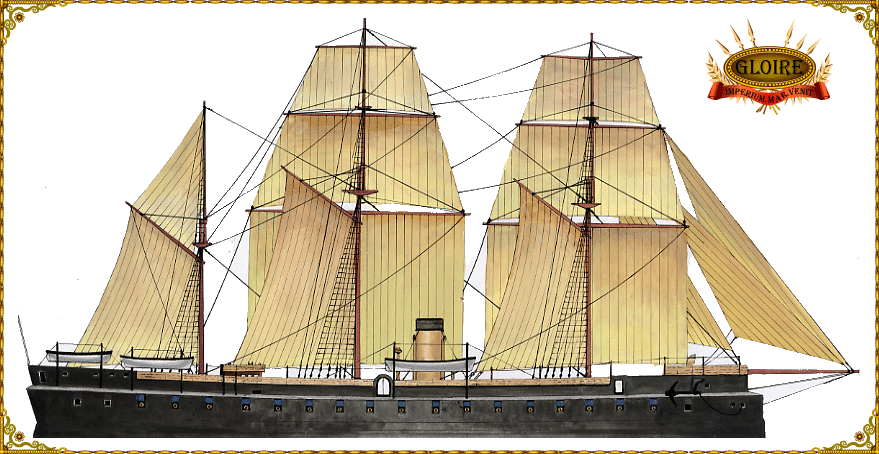
The first broadside ironclad: Gloire, 1859
They were also studying replacement for their older gunboats with the future Crocodile class, laid down after the war – The first was launched in 1873. These eight ships were better armed and had a longer range and speed. In 1875, the torpedo would enter French vocabulary and Claparède Yard would create a prototype, called “number one” in 1876. A new era started as these fast and cheap vessels were much simpler than submarines. Indeed, since the plongeur, there was no new prototype before 1888 and the all-electric Gymnôte by engineer Gustave Zédé, a quarter of a century after.

The 110-guns Hoche (ex-Prince Jérôme), steamship of the line.
 Bretagne (1855)
Bretagne (1855)
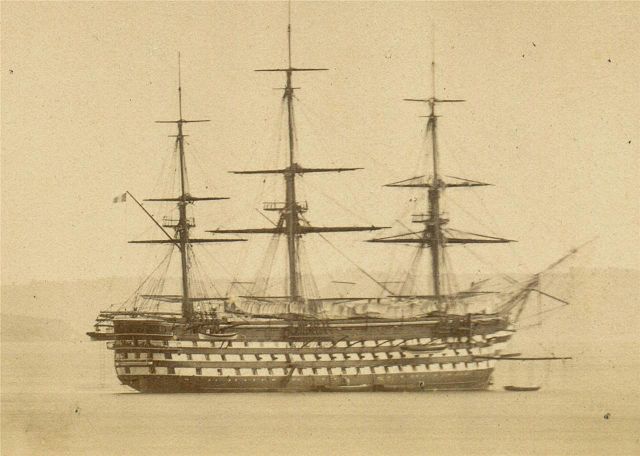
New flagship of the French Navy and world’s largest warship. She was launched in February 1855 and thus Completed two years after her British homologue HMS Duke of Wellington, Bretagne was commissioned too late to take part in the Crimean War, over after the fall of Kinburn in October 1855.
Specs: 5,289/6,875 tonnes FL, diimensions 81 x 18.08 x 8.56 m (266 x 59.3 x 28.1 ft). She had Indret steam engine, 8 boilers, 4,800 shp on a single shaft, 12.6 knots.
Capacity 1,800 passengers and crew 1,170 men 130 guns (detailed to come in a dedicated article)
 Gloire (1859)
Gloire (1859)
The first of three ships, Invincible and Normandie being laid down in May and September 1858 but launched later in April 1861 and March 1860 respectively at Toulon and Cherbourg. So we will focus here on the Gloire. Also in 1859 were started the Courronne, and the Magenta class. More were to come in 1861.
Napoléon class screw 2-deckers (1850)

Author’s illustration
The Napoleon was a ship of the line of the French Navy built from 1848. Equipped with 90 guns, it was the first warship in the world to have propeller propulsion1. Steam became the primary element of propulsion while the sails would become a simple auxiliary that could be reduced and used only in favorable winds to help the machine. Launched in 1850 at the arsenal of Toulon, she was the first of a class of nine warships designed by Henri Dupuy de Lôme. She was discarded in November 1873 after an artillery modernization.
 Algésiras sub-class (Napoléon) (1855)
Algésiras sub-class (Napoléon) (1855)
In construction, but completion during of after the war:
Algésiras 90 (launched 4 October 1855 at Toulon) – Transport 1869
Arcole 90 (launched 20 March 1855 at Cherbourg) – Stricken 1870
Redoutable 90 (launched 25 October 1855 at Rochefort) – Stricken 1869
Impérial 90 (launched 15 September 1856 at Brest) – Hulked 1869
Intrépide 90 (launched 17 September 1864 at Rochefort) – Stricken 1889
Also: Ville de Nantes sub-class:
-Ville de Nantes 90 (launched 7 August 1858 at Cherbourg) – Stricken 1872
-Ville de Bordeaux 90 (launched 21 May 1860 at Lorient) – Stricken 1879
-Ville de Lyon 90 (launched 26 February 1861 at Brest) – Stricken 1883
 Eylau class screw 2-deckers (1856)
Eylau class screw 2-deckers (1856)
(To come)
 Ville de Nantes class screw 2-deckers (1858)
Ville de Nantes class screw 2-deckers (1858)
(To come)
 Duguay-Trouin class screw 2-deckers (1858)
Duguay-Trouin class screw 2-deckers (1858)
(To come)
 Fontenoy (1858)
Fontenoy (1858)
(To come)
 St Louis (1858)
St Louis (1858)
(To come)
 Bayard (1860)
Bayard (1860)
(To come)
 Renommée (1857*)
Renommée (1857*)
(To come)
 Clorinde (1857*)
Clorinde (1857*)
(To come)
 Astrée (1859)
Astrée (1859)
(To come)
Read More:
R. Gardiner Conway’s all the world’s fighting ships 1860-1905
Roche, Jean-Michel (2005). Dictionnaire des bâtiments de la flotte de guerre française de Colbert à nos jours 1 1671–1870
Nomenclature des Navires Français de 1614 a 1661; Nomenclature des Vaisseaux du Roi-Soleil de 1661-1715, 1715-1774, 1774-1792, 1792-1799, 1799-1815 and 1814-1848. Alain Demerliac, Editions Omega
The Sun King’s Vessels (2015) Jean-Claude Lemineur. Editions ANCRE.
Winfield, Rif and Roberts, Stephen (2017) French Warships in the Age of Sail 1626–1786. Seaforth Publishing.
Winfield, Rif and Roberts, Stephen (2015) French Warships in the Age of Sail 1786–1861. Seaforth Publishing.
A History of the French Navy, from its beginnings to the present day (1973) E. H. Jenkins
50-gun ship, Rif Winfield (Chatham Publishing, 1997).
List_of_ships_of_the_line_of_France
90 guns on shipscribe.com/
Ships Plans
jose.chapalain.free.fr/
http://dossiersmarine.free.fr/fs_v_V3.html
http://shipscribe.com/marvap/
http://shipscribe.com/marvap/111a.pdf
web.archive.org/ dossiersmarine.free.fr 100 guns ships of Napoleon III
google book Appendice_au_Catechisme_du_Marin_et_du…
web.archive.org marinepremierempire.free.fr
en.wikipedia.org Ocean-class ship of the line

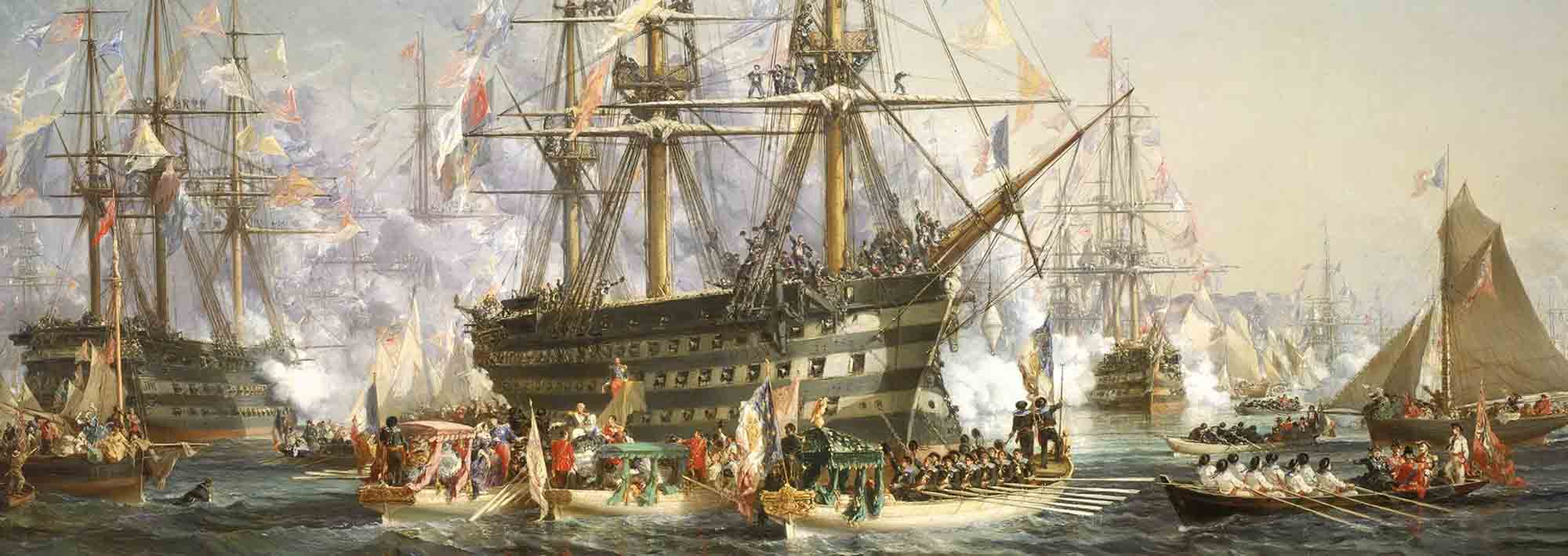
 Latest Facebook Entry -
Latest Facebook Entry -  X(Tweeter) Naval Encyclopedia's deck archive
X(Tweeter) Naval Encyclopedia's deck archive Instagram (@navalencyc)
Instagram (@navalencyc)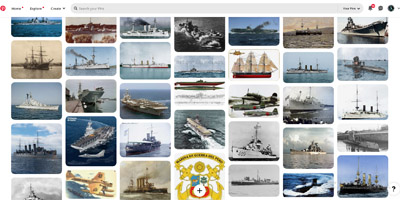

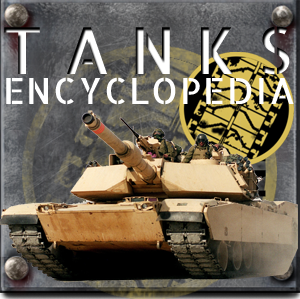
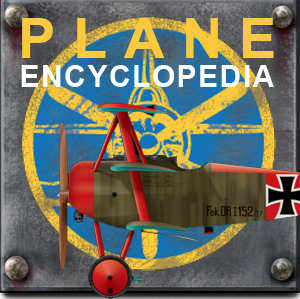
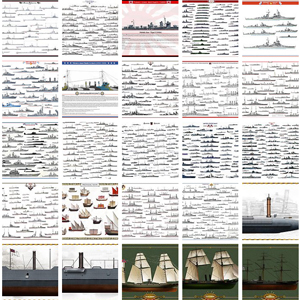
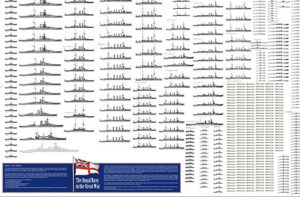
 French Navy
French Navy Royal Navy
Royal Navy Russian Navy
Russian Navy Armada Espanola
Armada Espanola Austrian Navy
Austrian Navy K.u.K. Kriegsmarine
K.u.K. Kriegsmarine Dansk Marine
Dansk Marine Nautiko Hellenon
Nautiko Hellenon Koninklije Marine 1870
Koninklije Marine 1870 Marinha do Brasil
Marinha do Brasil Osmanlı Donanması
Osmanlı Donanması Marina Do Peru
Marina Do Peru Marinha do Portugal
Marinha do Portugal Regia Marina 1870
Regia Marina 1870 Nihhon Kaigun 1870
Nihhon Kaigun 1870 Preußische Marine 1870
Preußische Marine 1870 Russkiy Flot 1870
Russkiy Flot 1870 Svenska marinen
Svenska marinen Søværnet
Søværnet Union Navy
Union Navy Confederate Navy
Confederate Navy Armada de Argentina
Armada de Argentina Imperial Chinese Navy
Imperial Chinese Navy Marinha do Portugal
Marinha do Portugal Mexico
Mexico Kaiserliche Marine
Kaiserliche Marine 1898 US Navy
1898 US Navy Sovietskiy Flot
Sovietskiy Flot Royal Canadian Navy
Royal Canadian Navy Royal Australian Navy
Royal Australian Navy RNZN Fleet
RNZN Fleet Chinese Navy 1937
Chinese Navy 1937 Kriegsmarine
Kriegsmarine Chilean Navy
Chilean Navy Danish Navy
Danish Navy Finnish Navy
Finnish Navy Hellenic Navy
Hellenic Navy Polish Navy
Polish Navy Romanian Navy
Romanian Navy Turkish Navy
Turkish Navy Royal Yugoslav Navy
Royal Yugoslav Navy Royal Thai Navy
Royal Thai Navy Minor Navies
Minor Navies Albania
Albania Austria
Austria Belgium
Belgium Columbia
Columbia Costa Rica
Costa Rica Cuba
Cuba Czechoslovakia
Czechoslovakia Dominican Republic
Dominican Republic Haiti
Haiti Hungary
Hungary Honduras
Honduras Estonia
Estonia Iceland
Iceland Eire
Eire Equador
Equador Iran
Iran Iraq
Iraq Latvia
Latvia Liberia
Liberia Lithuania
Lithuania Mandchukuo
Mandchukuo Morocco
Morocco Nicaragua
Nicaragua Persia
Persia San Salvador
San Salvador Sarawak
Sarawak Uruguay
Uruguay Venezuela
Venezuela Zanzibar
Zanzibar Warsaw Pact Navies
Warsaw Pact Navies Bulgaria
Bulgaria Hungary
Hungary

 Bundesmarine
Bundesmarine Dutch Navy
Dutch Navy Hellenic Navy
Hellenic Navy Marina Militare
Marina Militare Yugoslav Navy
Yugoslav Navy Chinese Navy
Chinese Navy Indian Navy
Indian Navy Indonesian Navy
Indonesian Navy JMSDF
JMSDF North Korean Navy
North Korean Navy Pakistani Navy
Pakistani Navy Philippines Navy
Philippines Navy ROKN
ROKN Rep. of Singapore Navy
Rep. of Singapore Navy Taiwanese Navy
Taiwanese Navy IDF Navy
IDF Navy Saudi Navy
Saudi Navy Royal New Zealand Navy
Royal New Zealand Navy Egyptian Navy
Egyptian Navy South African Navy
South African Navy






























 Ukrainian Navy
Ukrainian Navy dbodesign
dbodesign